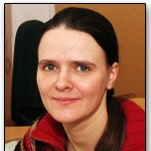Dental Engineering: Materials, Technologies and Devices for Dentistry 4.0
A special issue of Processes (ISSN 2227-9717). This special issue belongs to the section "Biological Processes and Systems".
Deadline for manuscript submissions: closed (30 September 2023) | Viewed by 16180
Special Issue Editors
Interests: materials engineering; nanotechnology; biomaterials; medical; dental; manufacturing and surface engineering; machine building and automation; management and organization
Special Issues, Collections and Topics in MDPI journals
Interests: dental and materials engineering; nanotechnology; biomaterials; medical, manufacturing and surface engineering; computer-aided engineering; medical electronics
Special Issues, Collections and Topics in MDPI journals
Interests: materials; surface and mechanical engineering; nanotechnology; biomaterials; management and organization
Special Issues, Collections and Topics in MDPI journals
Interests: dentistry; endodontics; dental implantology; dental prosthetics; dental imaging
Special Issues, Collections and Topics in MDPI journals
Special Issue Information
Dear Colleagues,
Health, including oral health, is a human right, and inclusive growth reduces inequalities, provided by universal access to healthcare, including primary dental care. Improving oral health reduces development burdens and costs to society, health systems, and the economy in general. Caries is one of the diseases that affect 3–5 million people in the world. Apart from focal symptoms in the oral cavity, it includes numerous distant effects involving numerous organs of the body, and, in extreme cases, it can also be a direct cause of death. Tooth extractions are also necessary, leading to a large percentage of people suffering from complete toothlessness. In turn, edentulousness is the cause of a variety of other conditions, including coordination diseases. Apart from aesthetic considerations, this is the reason for undertaking implantology and prosthetic treatment.
Of the global bodies responsible for the development of dentistry, there are very controversial and extremely opposite opinions. In addition to the consistent implementation of the outlined trends resulting from the idea of Dentistry 4.0, following the modern stage of Industry 4.0 of the industrial revolution, it is believed that 21st-century dentistry is in a crisis, and is still unable to overcome the global challenge of oral diseases. There have been criticisms that dentistry continues to adopt an approach to care that is dominated by treatment; is interventionist, technical, and specialized; and is increasingly reliant on technology advancement once a disease or problem has manifested, rather than being proactive and preventive. Even assuming that this approach is correct and should, therefore, be implemented, it is a process that will take decades to begin implementing. Moreover, it seems that both of the approaches outlined are not alternatives. While efforts in the field of systemic global prevention are fully justified, the interventionist and inherently individualistic removal of the effects of the diagnosed diseases is an indispensable synergistic action. Practically, it should be noted that even the most effective prevention is not able to effectively eliminate disease states in general.
In light of the opinions presented here, it is obvious that both now and for many years to come, modern dentistry must use engineering support. More generally, the interdisciplinary branch of technology dealing with these issues is referred to as Dental Engineering. This subject, understood very broadly, is covered in this Special Issue. Engineering activities in this area fully correspond to modern trends in industrial development. Nowadays, dental engineering has all of the achievements of material engineering; the technology of material processes, including additive technologies, manufacturing engineering with computer-aided design, and computer-aided manufacturing; tissue engineering; and information technology, automation, and robotics, taking into account the development of machines and technological devices used by dentists directly during the implementation of medical procedures and by engineers who manufacture implantable devices and elements of prosthetic restorations. An extremely important issue is the use of medical imaging methods, and in the era of the SARS-CoV-2 coronavirus pandemic, also technical means of protecting both dentists and patients. The issues raised relate generally to the current stage of civilization development and the industrial revolution in these areas. Industry and its production, social, spatial, and economic functions constitute the global base of prosperity, and is an important measure of civilization progress, and industrial production is the main determinant of society's value. The synergy of physical, cybernetic, and biological activities can be considered as the modern stage of civilization development, generally defined as Civilization 4.0, or, somewhat more narrowly, as Economy 4.0. These terms are related to the quite commonly introduced concept of Industry 4.0, which, in turn, is related to the more detailed issues of Materials 4.0 or Dentistry 4.0. We invite a wide group of scientists, engineers, and dentists to submit any scientific, research, engineering, IT, design, and technical studies that determine the modern possibilities of dentistry, during both the diagnostics and implementation of clinical procedures, including the possibility of using robots, fully or partially replacing dentists, and imaging the condition of the dentition of the patient using CBCT tomography; intraoral and extraoral scanning; and the manufacturing of implants and prosthetic restorations and other equipment. In the new approach, which takes into account advanced techniques of planning surgical and prosthetic procedures, the dental engineer starts treatment planning with the dentist before the dentist takes any action in the patient's mouth. The actual needs and possibilities of dental engineering related to its digitization within the Dentistry 4.0 model should be taken into account. It is also interesting to present case studies of the works and technological and clinical research of this modern approach to solving clinical problems in modern dentistry, as well as the use of appropriate biomaterials in dentistry. Particular attention should be paid to maintaining very high-quality standards and tight dimensional tolerances. Design solutions for implants and implant-scaffolds are of great importance, especially because of the improvement of osseointegration, including elements of tissue engineering. In the case of dental engineering, a very important role is played by the correct material design in relation to the biomaterials used, as well as the dissemination of the application of additive technologies for the manufacturing of implants, prosthetic restorations, and additional equipment used in clinical practice, including surgical templates and accessories facilitating the assembly of implants. The use of nanotechnology, e.g., in the use of nanostructured or nanocomposite materials, and the use of nano coatings, e.g., using the atomic layer deposition ALD methods as well as nanodots is worth considering. The intention of the editors of this Special Issue is to compile a very wide collection of studies that can be treated as a kind of compendium of modern dental engineering. We invite you to participate in co-creating this ambitious project.
Prof. Dr. Leszek Adam Dobrzański
Dr. Lech Bolesław Dobrzański
Prof. Dr. Anna D. Dobrzańska-Danikiewicz
Dr. Joanna Dobrzańska
Guest Editors
Manuscript Submission Information
Manuscripts should be submitted online at www.mdpi.com by registering and logging in to this website. Once you are registered, click here to go to the submission form. Manuscripts can be submitted until the deadline. All submissions that pass pre-check are peer-reviewed. Accepted papers will be published continuously in the journal (as soon as accepted) and will be listed together on the special issue website. Research articles, review articles as well as short communications are invited. For planned papers, a title and short abstract (about 100 words) can be sent to the Editorial Office for announcement on this website.
Submitted manuscripts should not have been published previously, nor be under consideration for publication elsewhere (except conference proceedings papers). All manuscripts are thoroughly refereed through a single-blind peer-review process. A guide for authors and other relevant information for submission of manuscripts is available on the Instructions for Authors page. Processes is an international peer-reviewed open access monthly journal published by MDPI.
Please visit the Instructions for Authors page before submitting a manuscript. The Article Processing Charge (APC) for publication in this open access journal is 2400 CHF (Swiss Francs). Submitted papers should be well formatted and use good English. Authors may use MDPI's English editing service prior to publication or during author revisions.
Keywords
- dental engineering
- materials engineering
- manufacturing engineering
- computer-aided design
- computer aided manufacturing
- medical imaging
- biomaterials
- prosthetic restorations
- nanostructural materials and coatings
Benefits of Publishing in a Special Issue
- Ease of navigation: Grouping papers by topic helps scholars navigate broad scope journals more efficiently.
- Greater discoverability: Special Issues support the reach and impact of scientific research. Articles in Special Issues are more discoverable and cited more frequently.
- Expansion of research network: Special Issues facilitate connections among authors, fostering scientific collaborations.
- External promotion: Articles in Special Issues are often promoted through the journal's social media, increasing their visibility.
- e-Book format: Special Issues with more than 10 articles can be published as dedicated e-books, ensuring wide and rapid dissemination.
Further information on MDPI's Special Issue polices can be found here.
Related Special Issue
- Synthesis and Characterization of Biomedical Materials in Processes (21 articles)








